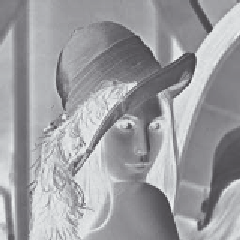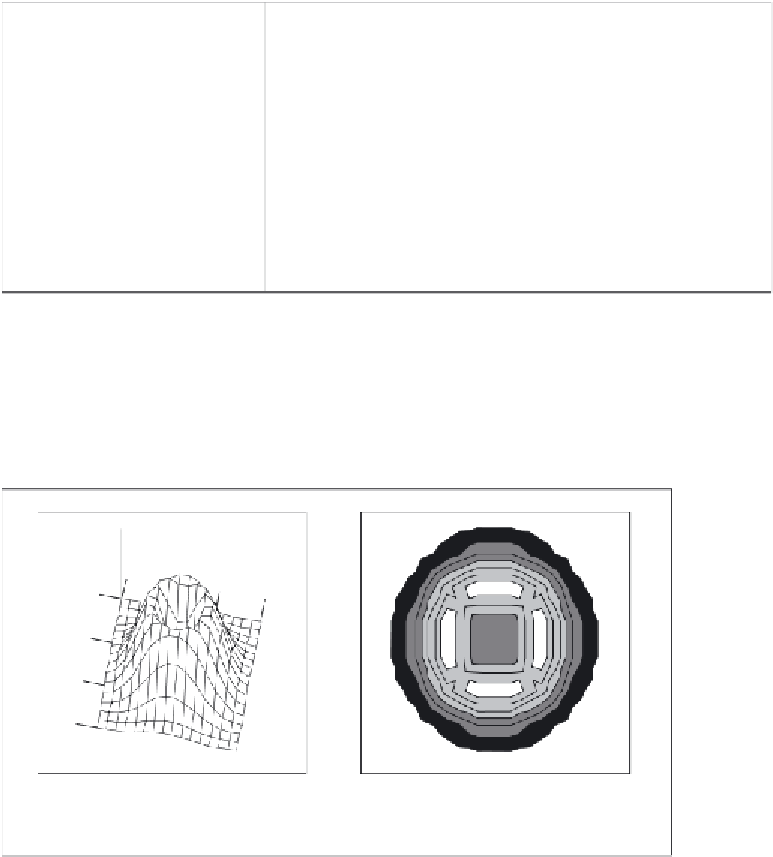Image Processing Reference
In-Depth Information
(a) Face image
(b) 11
11 LoG
(c) 15
15 LoG
Figure 4.28
Marr-Hildreth edge detection
low-pass filtering, as expected. This differs from first-order edge detection templates which
offer a
high-pass
(differencing) filter along one axis with a
low-pass
(smoothing) action
along the other axis.
0
10
15
0
5
10
15
| Fourier_of_LoG |
| Fourier_of_LoG |
(a) Relief plot
(b) Contour plot
Figure 4.29
Fourier transform of LoG operator
The Marr-Hildreth operator has stimulated much attention, perhaps in part because it
has an appealing relationship to human vision, and its ability for multiresolution analysis
(the ability to detect edges at differing scales). In fact, it has been suggested that the
original image can be reconstructed from the zero-crossings at different scales. One early
study (Haralick, 1984) concluded that the Marr-Hildreth could give good performance.
Unfortunately, the implementation appeared to be different from the original LoG operator
(and has actually appeared in some texts in this form) as noted by one of the Marr-Hildreth
study's originators (Grimson, 1985). This led to a somewhat spirited reply (Haralick, 1985)
clarifying concern but also raising issues about the nature and operation of edge detection


























